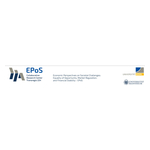- U.S. importers paid 93% of tariffs on Chinese goods
BONN, Germany & MANNHEIM, Germany–(BUSINESS WIRE)–In the trade conflict between the world’s two largest economies, U.S. importers have suffered from heavier price increases compared to their Chinese counterparts: Latest EPoS economic research at Mannheim University in Germany shows that almost 100 percent of U.S. punitive tariffs were borne by American importers. In contrast, only 68 percent of China’s retaliatory tariffs were shouldered by Chinese importers, U.S. exporters paid the other 32 percent. These are findings of the Discussion Paper “Who Pays for the Tariffs and Why? A Tale of Two Countries” published by EPoS economic research center at the Universities of Bonn and Mannheim.
“We analysed how the tariff burdens were shared between importers and exporters and got some surprising results,” says Lei Li, Assistant Professor of Applied Microeconomics at the University of Mannheim. “Chinese importers paid about two-thirds of China’s tariffs. Yet, U.S. importers shouldered 93 percent of price increases due to U.S. tariffs. Such a near-complete ‘pass-through’ is uncommon and astonishing given the power of the United States to influence terms of trade.”
Additional costs to importers due to tariffs
Lei Li and her co-authors estimate that U.S. tariffs were costing U.S. importers $1.21 billion per month in 2018 and $2.47 billion per month in 2019. This compares to costs for Chinese importers of $0.18 billion per month in 2018 and $0.51 billion per month in 2019. The period analysed is 2017-2019 using monthly data from the U.S. Census Bureau and the Customs General Administration of China covering more than 17,000 products in total.
EPoS explanation
The differing price burdens are mainly due to import structures, trade policies, and specific tariff ‘pass-through’ of products, that is, the extent to which changes in import tariffs are passed on to importers. China brought in more products with lower tariff pass-through, such as agricultural goods. In contrast, the U.S. shipped in more products with higher pass-through, such as electronics. The two countries adopted different strategies in the trade war.
FULL discussion paper
Access the full paper at: https://www.crctr224.de/en/research-output/discussion-papers/archive/2023/DP432
EPoS economic research center
EPoS is a cooperation of the universities Bonn and Mannheim, funded by the German Research Foundation (Deutsche Forschungsgemeinschaft, DFG).
CRCTR224 — Collaborative Research Center Transregio 224
Contacts
Press Contact
econNEWSnetwork
Sonja Heer
Telefon + 49 (0) 40 82244284
[email protected]







